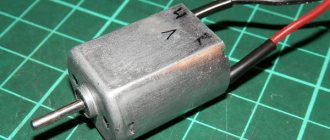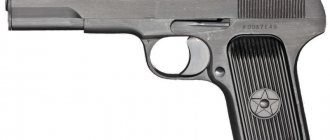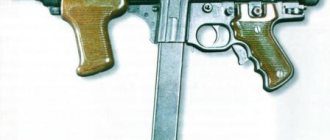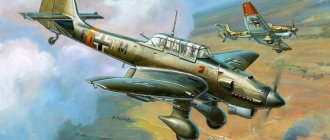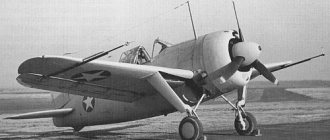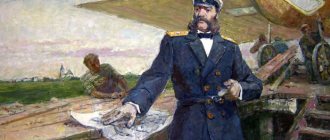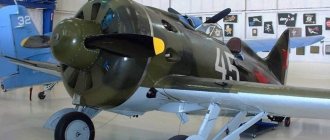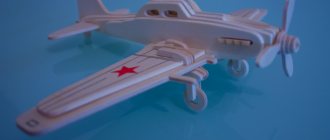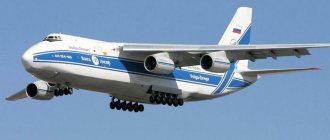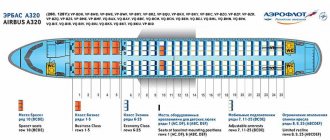Radio-controlled airplane model JUNKERS Ju-87 STUKA EP 400
A magnificent replica model of the German single-engine two-seat dive bomber Junkers Ju-87 STUKA, a participant in the Second World War. Model from the PrimaClasse 400 series.
Junkers Ju-87 STUKA - Junkers Ju-87 (German name "thing", Russian nickname "laptezhnik") (German Sturzkampfflugzeug - dive bomber) - single-engine two-seat (pilot and rear gunner) dive bomber and attack aircraft of the Second World War . The designer of the machine is Hermann Pohlmann. First flight in 1935, combat use in 1936 as part of the Condor Legion in Spain. The most famous pilot of the Ju-87 was Hans Ulrich Rudel, who received the highest awards among Luftwaffe pilots. Despite its low speed and mediocre aerodynamics (the landing gear was non-retractable), it was one of the most effective weapons of the Luftwaffe due to its ability to dive bomb. Yu-87 is one of the most famous symbols of the Blitzkrieg. Soviet pilots had the nicknames “laptyozhnik” (for the fairings of the landing gear) and “pevun” (“Pipes of Jericho”, which was driven by the flow of incoming air and produced a howl during a dive, exerting a psychological effect on the enemy).
- Model from the high-quality Prima Classe series manufactured in Japan from Kyosho,
- The model is made of fiberglass, balsa and light plywood, and covered with excellent film,
- The model is a complete copy of the real aircraft,
Included:
- Fully assembled and covered: fuselage, wing halves, stabilizer and fin.
- Landing gear struts and fairings, hood, set of fastening elements, screws, hogs, rods.
- Stickers, brief assembly instructions.
The kit requires:
- Radio control equipment with at least five channels,
- Twelve batteries or AA accumulators for the transmitter and receiver,
- Six micro servos with dimensions 11x24mm. and micro receiver,
- Li-Pol battery 11.1v 1250mah.
- Electronic speed controller for brushless motors with a minimum current of 25A,
- Brushless electric motor, power 200-250 watts,
- Four extensions for servos: 2 x 20 cm (minimum) for ailerons and 2 x 30 cm. (minimum) for flaps.
- Adapter for fixing the screw on the motor shaft,
- Battery charger,
- Power connectors for battery,
- Cyanoacrylic glue and epoxy resin.
- Propeller for electric motors, 9x4.5 inches (230x115mm.)
Specifications:
- Wingspan: 1210 mm.
- Fuselage length: 945 mm.
- Wing area: 22.0 dm2.
- Wing load: ~ 45 g/dm2.
- Wing profile: original, not symmetrical.
- Approximate take-off weight: ~ 1000 g
The Ju-87 dive bomber is one of the symbols of the Blitzkrieg
Among all the German combat aircraft of the Second World War, perhaps the most remarkable and famous was the Junkers Ju-87, which is a symbol of the blitzkrieg and in many countries of the world is still associated with the word “aggression”. This aircraft gained notoriety in the skies of Spain and Poland, in France and England, in the Balkans and in the Soviet Union, becoming a symbol of fear, destruction and grief. No other aircraft of the last war caused so much discussion and aroused so many conflicting opinions. Ju-87 - this seemingly unprepossessing, angular dive bomber has become, in fact, the most recognizable aircraft of the Luftwaffe. Because of its non-retractable landing gear, Soviet soldiers nicknamed it “laptezhnik” or “lapotnik”. Also, this aircraft received the nickname “Stuka” - from the German Sturzkampfflugzeug - the designation of all dive bombers. At first, this aircraft caused heated debate in the Luftwaffe leadership, but after the Polish and French campaigns, the dive bomber became almost a legend, and supporters of the Stuka created an aura of excellent and unrivaled weapons around the machine.
The Ju-87 dive bomber bore some resemblance to a bird of prey, and something diabolical was visible in its angular contours - the dive bomber's radiator resembled a wide gaping mouth, and the non-retractable landing gear with voluminous fairings resembled extended claws. All these features of the machine produced a strong psychological effect on those on whom the dive bomber dropped its bombs with inexorable accuracy. The Junkers Ju-87 was a very durable machine, which had relatively good handling for an aircraft of this class, excellent reliability, and fairly good visibility. The aircraft provided its crew with an excellent opportunity to hit any targets from a dive, ensuring that bombs were deflected from the target within a radius of no more than 30 meters. At the same time, the main disadvantage of the car was its low speed. This dive bomber could only be used if it had complete air superiority. The vehicle was very vulnerable and was an ideal target for fighters, as air battles during the “Battle of Britain” already showed.
It was not for nothing that this particular aircraft was considered one of the symbols of the “blitzkrieg” - it was intended for use in conditions of insufficiently active enemy air defense. Otherwise, all the advantages of the weakly protected and slow Junkers were quickly reduced to a minimum. Somewhere in the middle of the war, the use of this machine in daytime conditions became primarily dangerous for the pilots themselves. The increase in the number of Soviet fighters and the level of training of Soviet pilots led to the fact that the losses of Ju-87 dive bombers increased catastrophically. This forced the Germans to bomb from high altitudes, which negatively affected its accuracy, and also to allocate large groups of escort fighters for escort.
After the battle of Kursk, Ju-87s were increasingly used as training vehicles, and the remaining dive bombers in the army were equipped with flame arresters and transferred to night bomber units. By the fall of 1944, only bombers of the Ju-87G modification, equipped with two 37-mm guns (12 shells per barrel), were involved in daytime sorties. Their main goal was to fight Soviet tanks. They were gradually replaced by the troops with more advanced FW 190F and G aircraft. In total, about 6,500 Ju-87 aircraft of various modifications were produced before the end of the war. Dive procedure
Being at an altitude of about 4,600 meters, the dive bomber pilot looked for a target to bomb through a special observation window located in the floor of the cockpit. After finding the target, he released the air brakes and reduced the gas, turning the plane 180 degrees and going into dive mode at an angle of 60-90 degrees. To make it easier for the pilot to control the dive angle relative to the horizon, a special degree grid was applied to the glazing of the cockpit canopy.
As the plane approached the ground, a light came on on the contact altimeter, usually at an altitude of 450 meters. After this, the pilot pressed the buttons on the control stick, which were responsible for dropping bombs, at the same time the mechanism for automatic recovery of the aircraft from a dive was turned on and the aircraft began the leveling procedure, while the pilot experienced overloads of up to 6g.
At the moment when the Stuka's nose was above the horizon, the air brakes were retracted to their standard position, the throttle was opened, and the propeller pitch was set in climb mode. The pilot took control of the machine and returned to normal flight. He could use the bombs remaining under the wings to dive onto other detected targets.
It should be admitted that the bombing accuracy of the Ju-87 was slightly higher than that of the Soviet Pe-2 dive bomber, since the Junkers dropped bombs from a height of less than 600 meters, while the Pe-2 dropped bombs at a minimum from a kilometer altitude. Under such conditions, the Stuka pilot had the opportunity to aim almost point-blank, based on weather reports and making adjustments “by eye.” In addition, the Ju-87 dived at a relatively low speed (about 600 km/h), which gave the pilot enough time to make some adjustments to the flight path.
Aircraft design
The leading designer of the dive bomber was Hermann Pohlmann, who began work on the creation of this aircraft back in 1933. At the moment when the Ministry of Aviation published the requirements for the new dive bomber, they almost perfectly matched the finished vehicle. The Ju-87 made its first flight in 1935. In her aircraft, Pohlman successfully combined such important qualities for a dive bomber as excellent visibility, good controllability, and sufficient structural strength, which allowed the aircraft to perform maneuvers with high overloads. Not wanting to weaken the wing of the car by making cuts in it for niches for retracting the landing gear (which was typical for the newest aircraft of that time), Herman Pohlmann made it non-retractable. To reduce aerodynamic drag, he used large fairings, which Soviet soldiers later nicknamed bast shoes.
The Ju-87 is a two-seat, single-engine, all-metal low-wing aircraft with a fixed landing gear. The all-metal oval fuselage of the machine consists of 3 parts: the front, where the engine and its systems are located, the middle - the cockpit and the rear, to which the tail of the aircraft is attached. The tail unit of the vehicle is single-fin all-metal with a braced stabilizer. There are 2 trimmers on each elevator. External trimmers were connected to the Abfanggerat automatic dive, as well as brake flaps; internal trimmers made it easier for the pilot to control the machine. A characteristic feature of the appearance of the stabilizer, and the entire aircraft as a whole, can be considered the weight compensators, which look like semicircular segments at the ends of the elevator.
The wing of the aircraft was also very memorable and was made according to the “reverse gull” design and had a characteristic W-shape. The W-shape of the aircraft wing made it possible to reduce the weight and size of the non-retractable landing gear. In the center section of the vehicle there were large fuel tanks, the hatches for their filler necks were located on top of the center section on both sides of the fuselage. Trapezoidal consoles with a break along the trailing edge were attached to the center section at 4 points to the rear and front side members. Two slotted ailerons and four slotted flaps ensured the dive bomber maintained good flight data at all stages of the vehicle’s flight. This design was typical of the Junkers company and was called Doppelflugel - double wing. The ailerons were equipped with trim tabs and had external weight compensation. Also located on the front spar were brake flaps, which were profiled plates measuring 2300x160 mm with a longitudinal slot. The brake flaps and flaps were hydraulically mechanized. During dive bombing, the brake flaps were controlled using the Ahfanggerat automatic dive bomber.
The aircraft's landing gear was non-retractable and had a classic design. The main landing gear was covered with removable fairings and was interchangeable for both landing gear. The dimensions of the main wheels are 840x300 mm. There was also an option for installing a dive bomber on a ski chassis.
The cockpit of the Ju-87 was located in the middle part of the fuselage between the 2nd and 5th frames, while a power anti-cage frame was mounted on the 3rd reinforced frame. The cockpit canopy included 4 parts: a front visor, a sliding part of the pilot's canopy, a fixed part of the cockpit between the pilot and the gunner-radio operator, and a sliding part with a ball mount for the MG 15 machine gun of the gunner-radio operator. In the fuselage of the dive bomber, in front of the front spar, there was a through box-visor, which was covered on the lower surface of the fuselage by a glazed hatch, and from the inside of the cockpit by a special movable reinforced duralumin flap. With its help, the pilot could accurately determine the moment to start diving on the target. Between the pilot and the gunner-radio operator there was a FuG VIIa shortwave radio station.
The propeller group consisted of a 12-cylinder liquid-cooled Jumo211 engine. Its power, depending on the model, ranged from 1200 to 1500 hp. The aircraft's propeller was wooden, wide-bladed with a diameter of 3.40 m and had a variable pitch. The automatic rotor blade swash and engine control were combined with the automatic dive into one mechanism, which controlled the rotation of the propeller blades, the fuel supply to the engine, the operation of the oil and water radiator flaps, and the tail and wing mechanization system.
The dive bomber's armament consisted of two fixed 7.92-mm MG 17 machine guns (ammunition capacity of 1000 rounds per barrel), which were placed in the wing consoles, as well as a movable MG 15 machine gun in a ball mount. The ammunition for this machine gun was placed in disks that were located on the right side of the radio operator’s cabin. The bomb load of the Ju-87 reached 1000 kg and was placed on 3 hardpoints. With the help of a special H-shaped trapezoidal fork, the bomb from the central bomb rack during dive bombing was moved to a safe distance from the aircraft so as not to fall within the area of its propeller. The composition of weapons could change depending on the modification. So, for example, the anti-tank version of the Ju-87 G-2 dive bomber was equipped with 2 37-mm Flak 18 cannons.
Performance characteristics of the Ju-87B2:
Dimensions: wingspan - 13.6 m, length - 11.1 m, height - 4.01 m. Wing area - 31.9 sq. m. Aircraft weight, kg - empty - 2,750 - normal take-off - 4,090 Engine type - 12 - cylinder Junkers Jumo-211Da power 1,200 hp. Maximum speed – 380 km/h Maximum dive speed – 650 km/h Normal practical range – 790 km. Maximum rate of climb – 333 m/min Service ceiling – 8,000 m Crew – 2 people. Payload: up to 1000 kg of bombs, two wing-mounted 7.92 mm MG-17 machine guns and one 7.92 mm MG-15 machine gun on a mobile radio operator mount.
Sources used: www.airpages.ru/lw/ju87a.shtml www.base13.glasnet.ru/wol/ju/87.htm www.airwar.ru/enc/bww2/ju87b.html www.popmech.ru/blogs/ post/242-hroniki-pikiruyuschih-bombardirovschikov/ www.vspomniv.ru/Ju_87.htm
